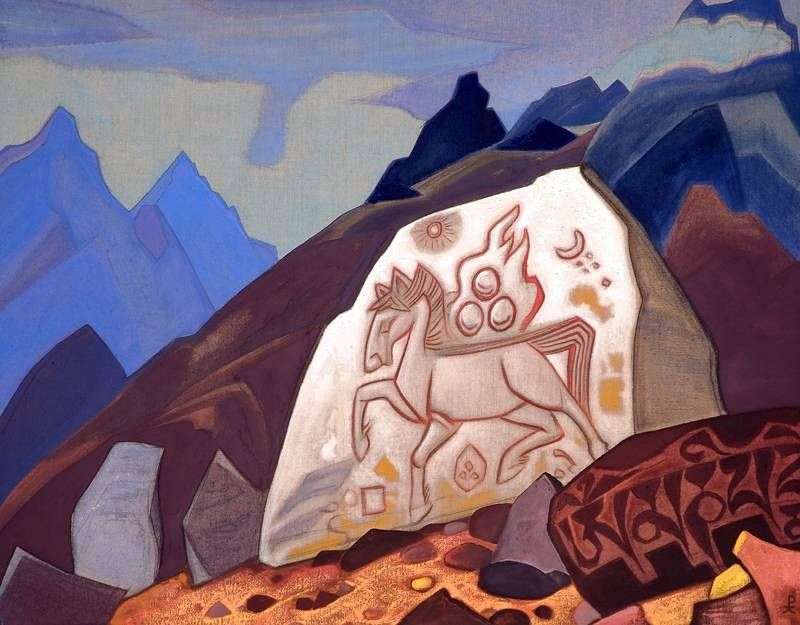
Several names for this canvas – this is the “White Stone” and “Chintamani Sign” and “Horse of Happiness” … And all have a secret, deepest meaning.
During the Central Asian Expedition in the villages of Mongolia and Tibet, N. K. Roerich met images of the White Horse carrying the Treasure of the World – Chintamani on its back. Mongolian and Tibetan legends say that in ancient times, from a distant star, wonderful Stone – Chintamani – Mira Savior, sent to help people, fell to the ground. White Horse Erdeni Mori carries him from the top of the mountains to the valleys. According to popular belief, everywhere where Erdeni Mori appeared, carrying the Treasure of the World, happiness came.
Here is how Nicholas Roerich wrote about this: “Erdeni Mori has long been walking, and his treasure is shining. At sunrise and at sunset the sun goes down, it means that a great white horse passes somewhere, carrying treasure. In the Himalayas, in Tibet and in Mongolia constantly have to meet with the mention of this intimate miracle. … All sorts of traditions and songs are composed of him “” … Legendary, from time to time a famous wonderful stone, visiting especially remarkable areas at a particularly necessary time “
In the picture we see a huge white stone with a carved image of a horse with fire on its back, several important astrological and geometric symbols on the stone, next to it, below, the second stone with the Tibetan inscription on it: “Aum! Oh, treasure in the lotus”.
The white horse, descending from the rocks that are burning in the rays of dawn, bears on its back the sign of three spheres enveloped in a golden flame. This sign, chosen by Roerich for the Banner of Peace, is one of the oldest symbols of humanity, it has been known since the Neolithic era. This sign is found in a wide variety of cultures; in many philosophical systems it is given special significance: in Christianity it is the Trinity, and in Buddhism it is the Triratna, that is, the Buddha, his Teaching and his Community. N. K. Roerich wrote about it this way: “Chintamani – the most ancient idea of India about the happiness of the world – contains in itself this sign.
In this picture a lot of symbolism. Consider the most important for understanding the idea of the artist. Stone – the white color of the stone also means the Highest Decision, that it is the Shambhala Plan, carried out rigorously, regardless of any obstacles of the enemies of the light – the “invisible black lodge”. in the eastern teachings of Shambhala, the color of the stone also means the Highest Decision, that it is the Plan of Shambhala, which is carried out, in spite of any obstacles of the enemies of the light – the “invisible black lodge.”
Also, white color is considered “male”, and purple – “female”, in particular – intense purple – the color of the mother of the World, on the canvas there are purple shades of mountains and stones, which clearly indicates the “female frame” of white stone.
On the stone at the top left – the Sun with rays of light around it. To the right and below – the Moon. The sun and the moon symbolize the Higher and Lower Minds of man. “Three circles in a circle” is a sign of Shambhala, and the fire on the stone is a symbol of the Doctrine of Fire. The stone with three circles is a symbol of the Trinity: in the circle of Eternity – Past, Present and Future.
The symbolism of the horse in the East is given great attention and Nikolai Konstantinovich repeatedly turned to this symbol. On a horse there is a flame and in it three Circles – the Sign of Shambhala. High Thought bears Fire, in which symbols are transformed into the Teaching of Fire and it is already accessible to people, for it is written in letters of human letters.
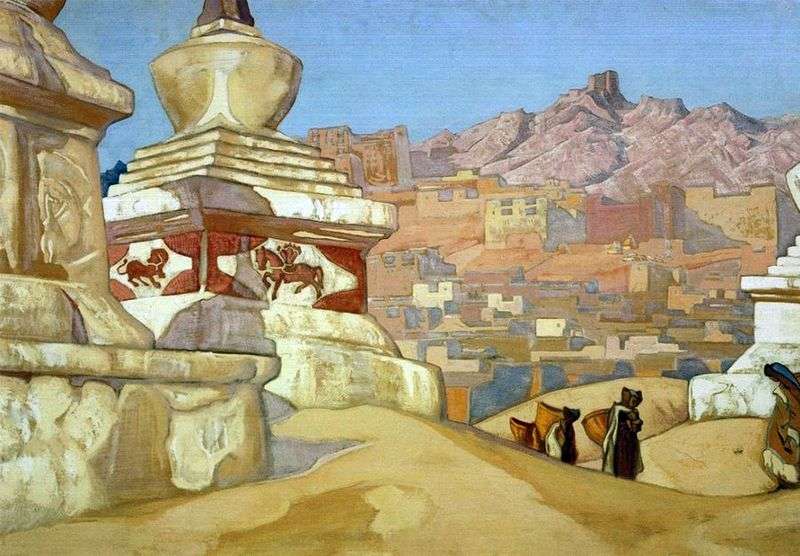 Red Horseman by Nicholas Roerich
Red Horseman by Nicholas Roerich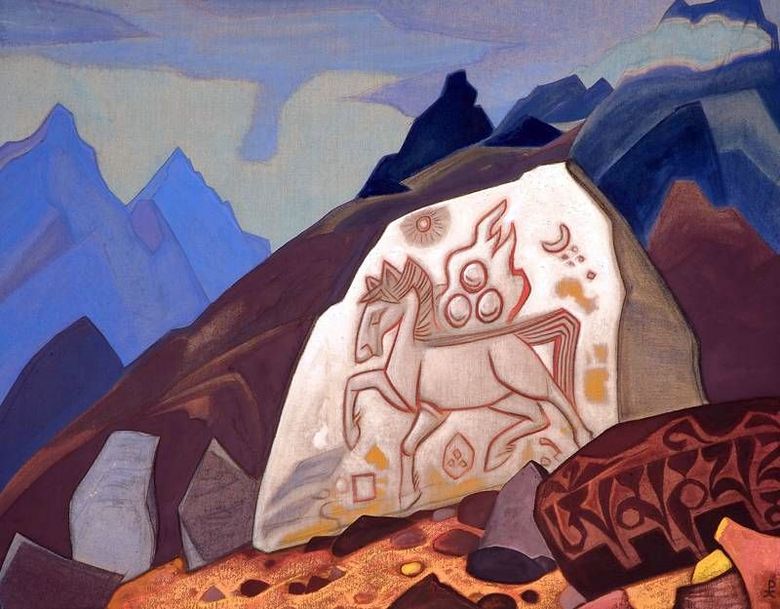 Pierre blanche – Nicholas Roerich
Pierre blanche – Nicholas Roerich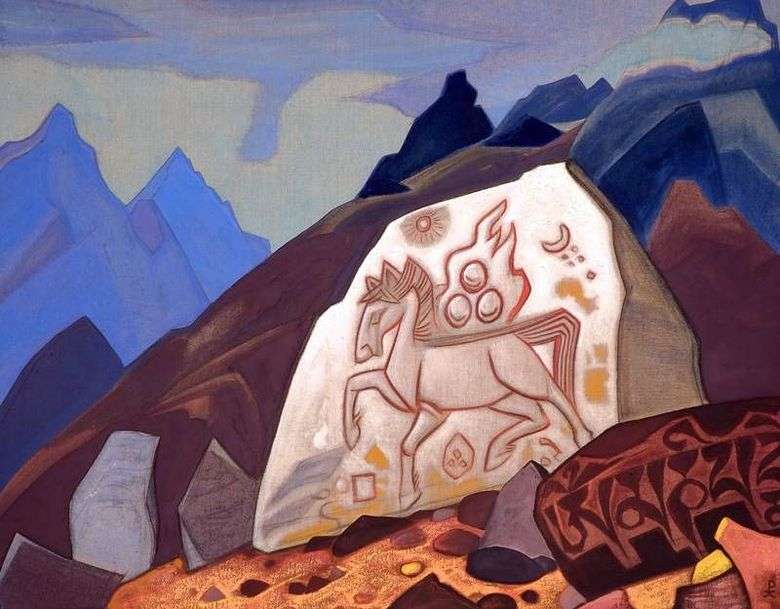 Piedra Blanca – Nicholas Roerich
Piedra Blanca – Nicholas Roerich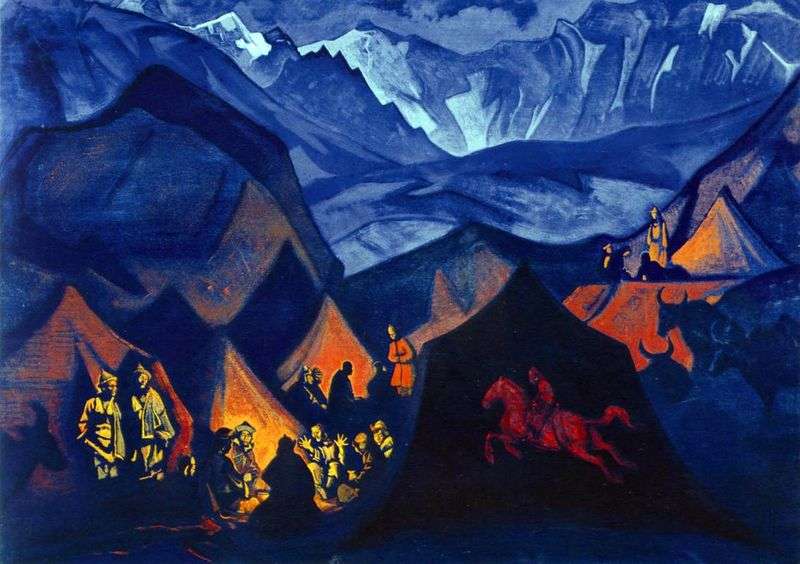 Whispers of the Desert by Nicholas Roerich
Whispers of the Desert by Nicholas Roerich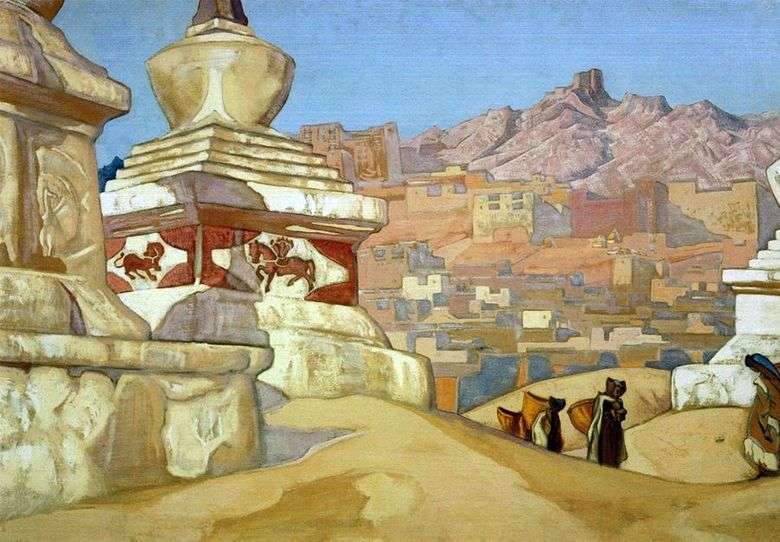 El jinete rojo – Nicholas Roerich
El jinete rojo – Nicholas Roerich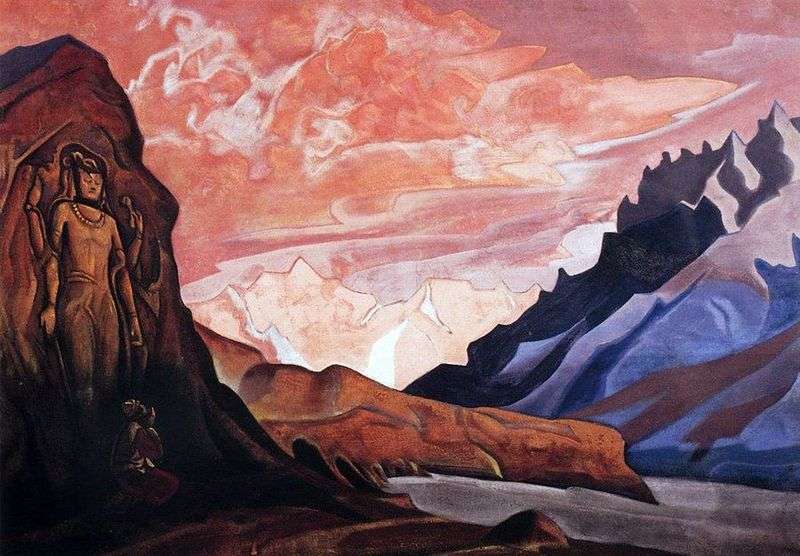 Maitreya Winner by Nicholas Roerich
Maitreya Winner by Nicholas Roerich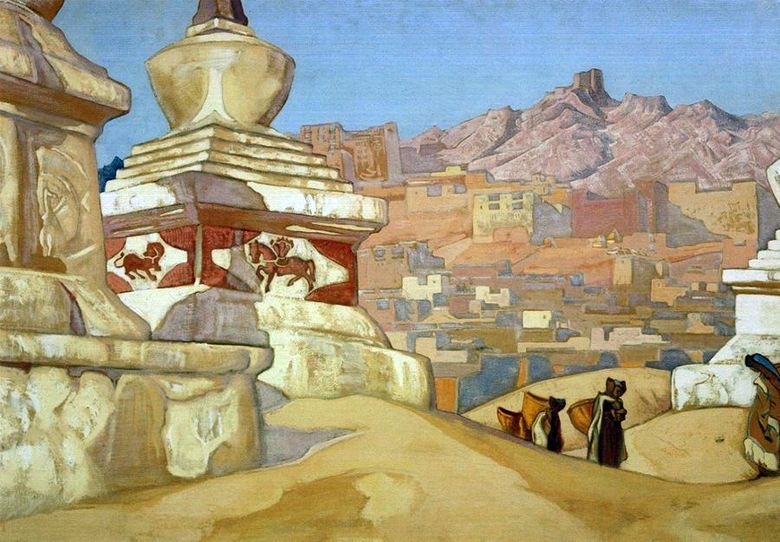 Le cavalier rouge – Nicholas Roerich
Le cavalier rouge – Nicholas Roerich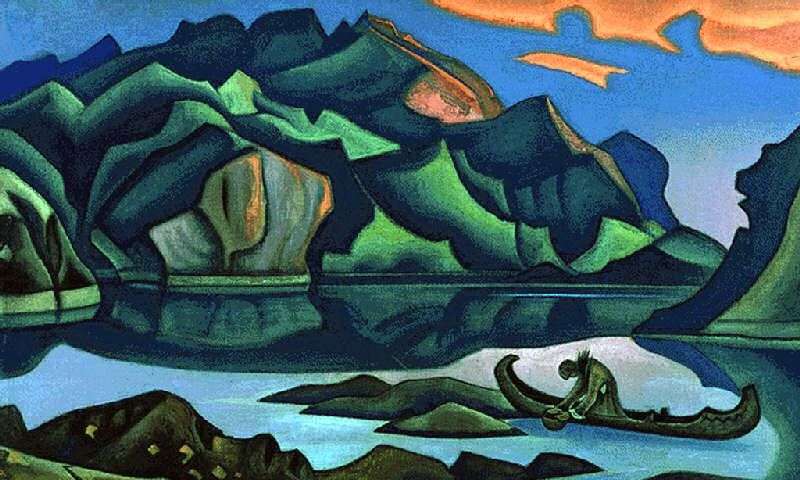 Buried treasure by Nicholas Roerich
Buried treasure by Nicholas Roerich